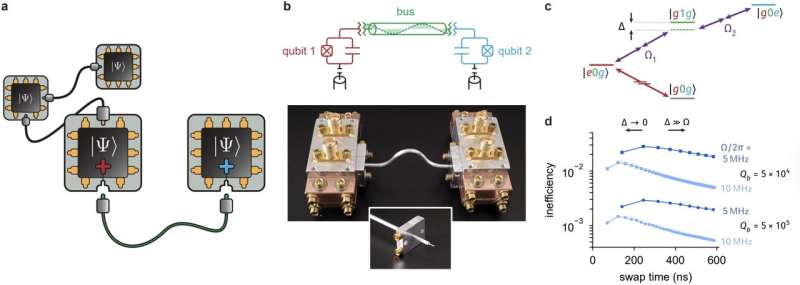
Quantum computing is set to revolutionize the field of computation by leveraging the principles of quantum mechanics. Recently, researchers from the University of Illinois at Urbana-Champaign introduced a new modular architecture designed to enhance the scalability of superconducting qubit devices. Their findings, published on July 30, 2025, in the journal Nature Electronics, outline a fault-tolerant method for building a robust quantum network.
Scaling quantum systems effectively has long been a challenge for physicists and engineers. Traditional approaches often struggle with error correction and maintaining the quantum state necessary for long-term computations. The innovative solution proposed by the research team involves a modular setup where multiple superconducting qubit devices can function independently while being interconnected through a low-loss interconnect.
Wolfgang Pfaff, the senior author of the study, emphasized the necessity of modular quantum computing. He noted, “The starting point for this study was current insight in the field of superconducting quantum computing that we will need to break out processors into multiple independent devices.” This approach, gaining traction among organizations such as IBM, aims to enhance the engineering of quantum networks.
The research team focused on minimizing signal degradation and energy dissipation when transmitting quantum information between devices. Their method employs a high-quality superconducting coaxial cable, referred to as a bus-resonator. This connector allows for precise placement, enabling effective communication between qubits and cables. Pfaff explained, “We connect a qubit capacitively to a cable through a custom connector that places the cable very close (sub-mm precision) to the qubit.”
Significantly, the researchers demonstrated that their modular system can connect and disconnect superconducting devices without causing damage or significant signal loss in quantum gates. This capability is critical as it opens the door for the construction of reconfigurable quantum systems. Pfaff highlighted the potential for future expansion, stating, “Using our approach, I think that we have opportunities to build reconfigurable quantum systems from the bottom up.”
As the team continues to explore the architecture’s limitations, they are also investigating ways to enhance connectivity by increasing the number of elements in their quantum networks. This research is vital for overcoming existing system losses and ensuring compatibility with quantum error correction protocols.
The implications of this research extend beyond theoretical advancements. The ability to create modular quantum networks could pave the way for scalable quantum computing solutions capable of addressing complex real-world problems. As the field of quantum computing evolves, the work being conducted at the University of Illinois represents a significant step toward practical applications of this groundbreaking technology.
For further details on their findings, please refer to the article by Michael Mollenhauer et al in Nature Electronics. The DOI for the study is 10.1038/s41928-025-01404-3. This research underscores the importance of collaborative efforts in advancing technology and the potential impact on various industries reliant on advanced computational methods.






